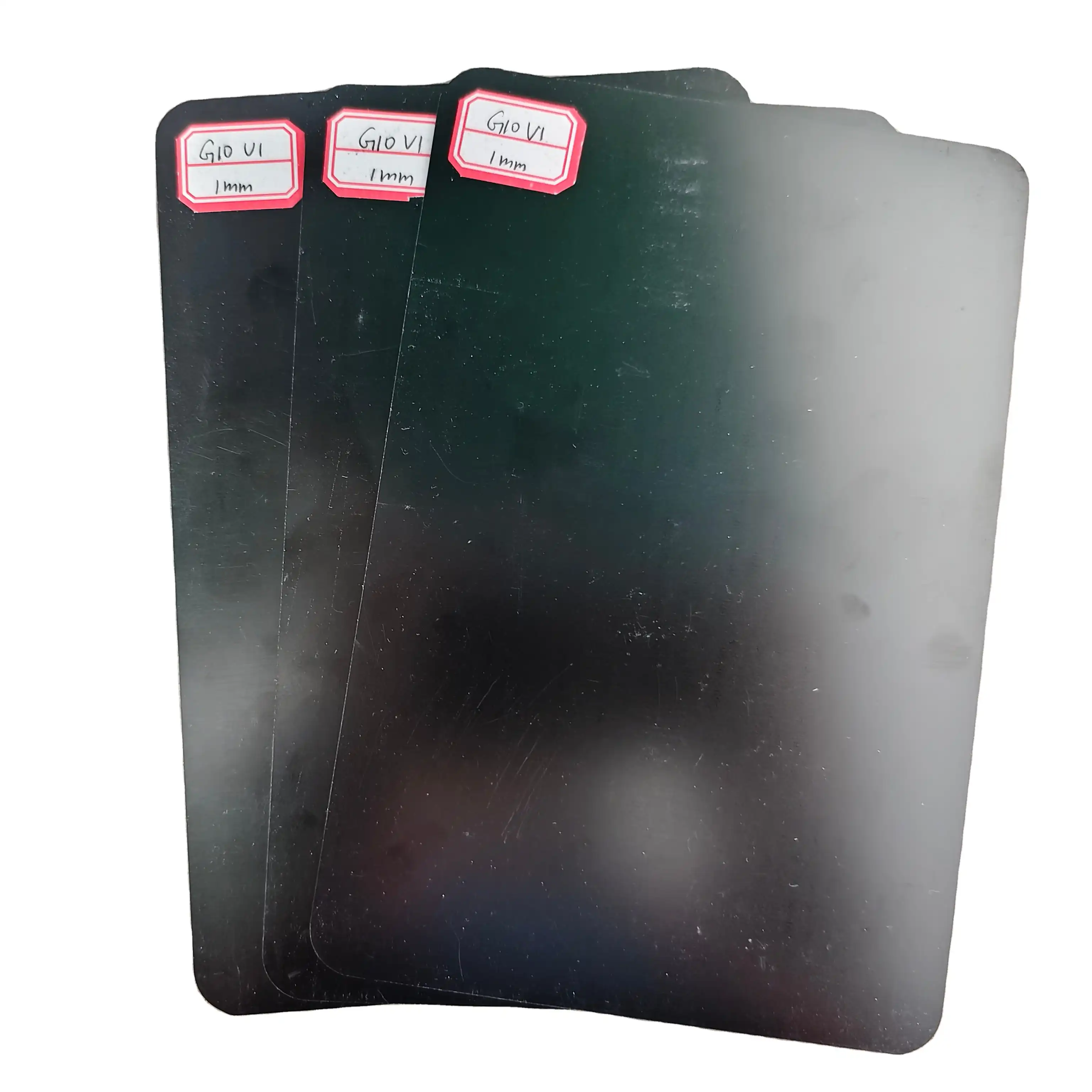International Standards Governing G10 Sheets
NEMA Standards for G10 Sheets
The National Electrical Manufacturers Association (NEMA) has established comprehensive standards for G10 sheets. These guidelines encompass various aspects, including physical properties, electrical characteristics, and thermal performance. NEMA Grade G10 specifications ensure that sheets meet rigorous requirements for dielectric strength, flexural strength, and impact resistance. Manufacturers must adhere to these standards to produce G10 sheets that consistently deliver optimal performance across diverse applications.
IEC Standards for Electrical Insulation
The International Electrotechnical Commission (IEC) has developed standards that address the electrical insulation properties of G10 sheets. These standards delineate testing methodologies and performance criteria for voltage breakdown, surface resistivity, and volume resistivity. Compliance with IEC standards is crucial for G10 sheets used in high-voltage applications, ensuring safety and reliability in electrical systems worldwide.
ASTM Test Methods for G10 Sheets
The American Society for Testing and Materials (ASTM) provides standardized test methods for evaluating the mechanical and physical properties of G10 sheets. These methods include assessments of tensile strength, compressive strength, and water absorption. ASTM standards facilitate consistent quality control and enable accurate comparisons between different G10 sheet products, aiding in material selection processes for engineers and designers.
Key Characteristics of G10 Sheets
Electrical Insulation Properties
G10 sheets boast exceptional electrical insulation properties, making them a preferred choice in numerous electrical and electronic applications. Their high dielectric strength, typically ranging from 800 to 1000 volts per mil, allows them to withstand substantial electrical stresses without breakdown. This characteristic is particularly valuable in high-voltage equipment, circuit boards, and transformer components. Additionally, G10 sheets exhibit low dielectric loss, minimizing energy dissipation in alternating current applications and enhancing overall system efficiency.
Mechanical Strength and Durability
The robust mechanical properties of G10 sheets contribute significantly to their versatility and reliability. These materials demonstrate impressive tensile strength, often exceeding 40,000 psi, which ensures structural integrity under various load conditions. The high flexural strength of G10 sheets, typically around 65,000 psi, allows them to resist bending and maintain their shape even under considerable stress. This combination of strength and durability makes G10 sheets ideal for applications in aerospace, automotive, and industrial machinery where structural stability is paramount.
Thermal and Chemical Resistance
G10 sheets exhibit remarkable thermal stability, maintaining their properties across a wide temperature range. They can withstand continuous operating temperatures up to 130°C (266°F) without significant degradation, making them suitable for use in high-temperature environments. Furthermore, G10 sheets demonstrate excellent chemical resistance, effectively withstanding exposure to various oils, solvents, and mild acids. This resistance to environmental factors ensures long-term reliability and reduces the need for frequent replacements, contributing to cost-effectiveness in many applications.
Applications and Innovations in G10 Sheet Technology
Advanced Electronics and Telecommunications
In the realm of advanced electronics and telecommunications, G10 sheets play a pivotal role in ensuring signal integrity and component isolation. Their low dielectric constant and loss tangent make them ideal for high-frequency circuit boards and antenna substrates. As 5G technology continues to evolve, G10 sheets are being engineered with even more precise tolerances to meet the demanding requirements of millimeter-wave applications. Innovations in G10 sheet manufacturing processes are also yielding materials with enhanced surface smoothness, crucial for the development of ultra-high-speed digital circuits.
Aerospace and Defense Applications
The aerospace and defense sectors leverage the unique properties of G10 sheets to create lightweight yet robust components. In aircraft construction, G10 sheets are utilized in radomes, control surfaces, and interior panels, where their combination of low weight and high strength-to-weight ratio is particularly advantageous. Recent advancements have focused on developing G10 sheets with improved flame retardancy and reduced smoke generation, addressing stringent safety requirements in aviation. Additionally, the material's excellent dimensional stability under varying environmental conditions makes it invaluable in precision military equipment and satellite components.
Emerging Green Energy Technologies
As the world transitions towards sustainable energy solutions, G10 sheets are finding new applications in green technologies. In wind turbine manufacturing, these materials are used to create durable and lightweight blade components, enhancing energy efficiency and longevity. The electrical insulation properties of G10 sheets are also being harnessed in the development of advanced fuel cells and energy storage systems. Researchers are exploring modifications to G10 sheet compositions to optimize their performance in these emerging applications, potentially incorporating nano-materials to enhance specific properties such as thermal conductivity or electrical resistance.
Conclusion
G10 sheets stand as a testament to the power of engineered materials in driving technological progress. Their adherence to international standards ensures consistent quality and performance across diverse applications. The unique combination of electrical insulation, mechanical strength, and environmental resistance positions G10 sheets at the forefront of innovation in electronics, aerospace, and emerging green technologies. As industries continue to evolve, the versatility and reliability of G10 sheets will undoubtedly play a crucial role in shaping the future of engineering and manufacturing.
Contact Us
For more information about our high-quality G10 sheets and how they can benefit your projects, please don't hesitate to contact us at info@jhd-material.com. Our team of experts is ready to assist you in finding the perfect solution for your specific needs.






